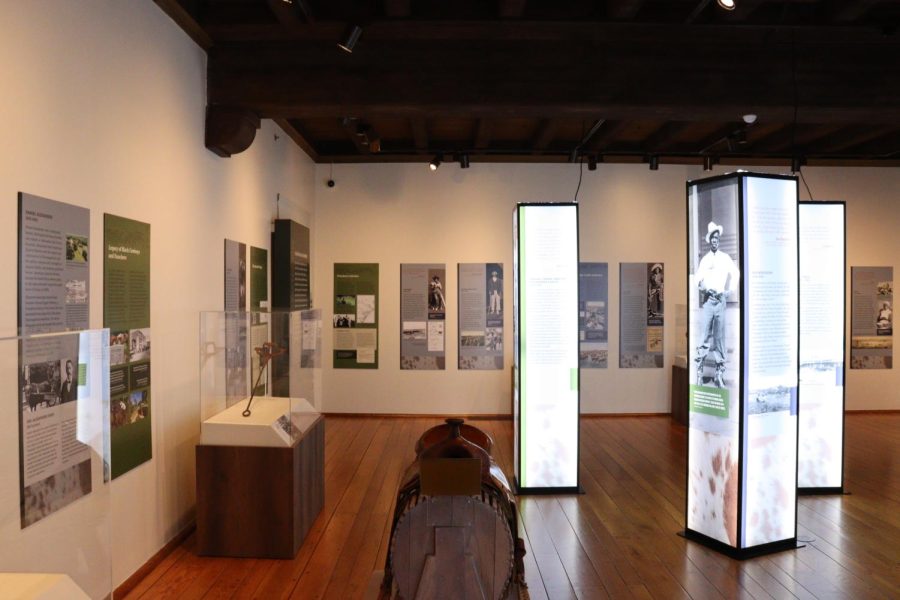The Witte: ‘Black Cowboys: An American Story’
The Wild West told through the Black cowboys who paved their trails
The main floor of the Black Cowboys exhibit has displays around the room, artifacts to view and interactive items. Mason Hickok/The Paisano
February 22, 2022
The “Black Cowboys: An American Story” exhibition has been on display at the Witte Museum since November 2021. The exhibition explores the lives of Black men, women and children who worked on Texas ranches, drove cattle and found their way onto film.
One of the overarching themes of the exhibit is the exploration of the overlooked importance of Black cowboys as an essential presence in the tale of the American West.
“We wanted to highlight them equally, we didn’t want to have half stories if we could help it,” remarked Michelle Everidge, Chief of Strategic Initiatives at the Witte.
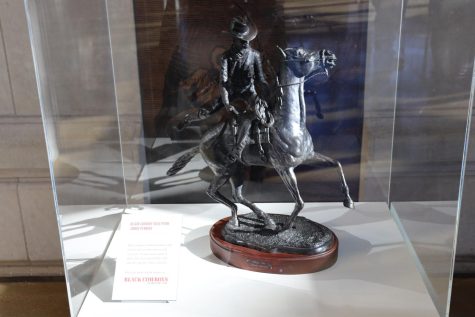
Visitors enter into a foyer lined with cutouts of men and women whose stories are personified in the adjacent rooms. In the middle of the room sits a saddle and cowboy boots –– in some cases, objects and artifacts within the exhibit are real, other times, they are representations of the real thing.
Directly behind the entrance, there’s a looped video displayed as a part of the exhibit. The video is of actor and playwright Eugene Lee, playing the role of Hector Bazy, a cowboy featured in the exhibit. Lee is reading lines from a manuscript Bazy wrote while on the cattle trail. The small theater is dressed to resemble the sunset on the Texas plains.
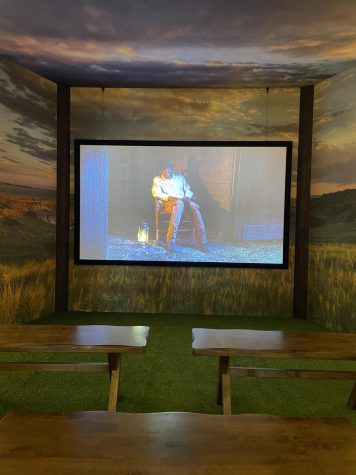

The main room has walls adorned with information, artifacts and pictures. In the middle of the room stands several displays, each with their own character’s story being told. In trying to tell individual stories alongside a larger narrative, the displays were used as a way to immortalize the figure. Quotes were pulled from the cowboys themselves or someone close to them.
“If we couldn’t get them specifically, we tried to get somebody speaking about them,” Everidge said.
The first section of the exhibit puts visitors into the lives of the cowboys who worked the cattle trails. The large display on the wall reads: “Black cowboys were integral to the Texas economy.” Furthermore, this portion of the exhibit has a depiction of what one of the wagons might have looked like. The wagon allows guests to get a hands-on view of life on the cattle trails. Various drawers, shelves and windows give a glimpse into life on the trails –– trips that often lasted six months.
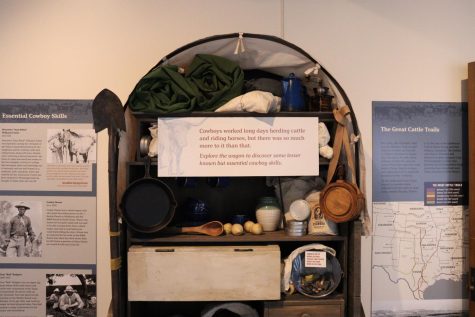

In one corner of the exhibit is the section on ranching and farming. After Emancipation, many cowboys found their way to the many freedom colonies that were being populated. These places were a refuge for freed slaves and they also allowed cowboys to learn the skills to start their own ranches and farms. Dr. Everidge noted the work of The Texas Freedom Colonies Project. The initiative is supported by Texas A&M with a goal to “prevent the erasure, destruction, and decay of cultural properties within settlements in partnership with descendant communities,” according to their website.
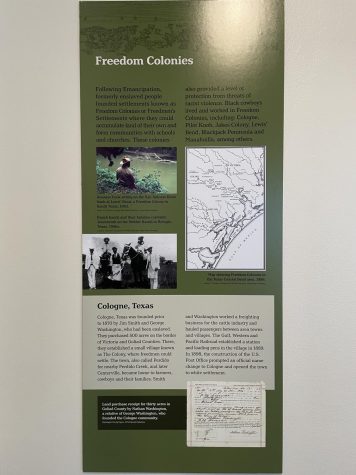

In talking about some of the research behind the exhibit, Everidge noted the many sources the team utilized. Places like UTSA’s Special Collections, the Black Cowboy Museum in Rosenberg, Texas and several other places.
“We found pieces wherever we could. There’s a really wonderful Texas Coastal Bend collection … through Texas State. We worked with UTSA a lot. We worked with individual families and the Library of Congress. It’s really, you know, finding needles in haystacks and using that to build a constellation to develop a full story,” explained Everidge.
The final section of the exhibit puts visitors into the boots of rodeo, music and film stars. Black cowboys working on ranches often put their skills into performances for rodeos and film. One of the displays talks about Fred Whitfield, an eight-time rodeo world champion. This section also notes the depiction of the image of the cowboy on film. A series of posters on the wall from the films “The Crimson Skull,” “Harlem Rides The Range” and “Concrete Cowboy” show their protagonists dawning white cowboy hats. Everidge notes some of the tropes present in cowboys on film.
“All of the Black cowboys in each of these three images that span 100 years of Black cowboy filmmaking are wearing white hats. Why are they wearing white hats … because they’re the good guys. You’ll notice the iconography sticks … the Black cowboy ends up fitting into its own sort of trope,” Everidge said.
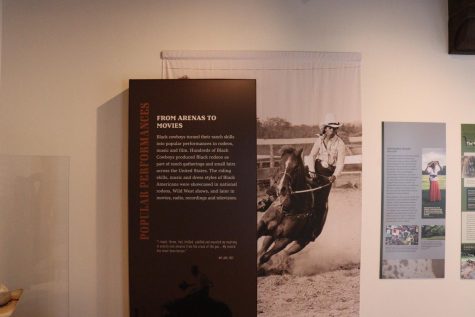

While the exhibit is nearing its closing in San Antonio, Everidge is hopeful that the museum gains traction outside the city.
“We are working with Smithsonian sites to try and travel the exhibition across the U.S.,” Everidge said.
Everidge goes on to note some of the things she hopes viewers have gained from the exhibit.
“You know, I think that people can see themselves represented in this. I hope that they can see their family members, their ancestors here … this was a really important part of Texas history that deserves its due celebration. I hope that they can see that. We’re not talking about a small percentage of folks, we’re talking about a quarter of the people who worked the trail,” Everidge said.
“Black Cowboys: An American Story” runs through April 16, 2022. Additional programming information can be found on the museum’s website.

